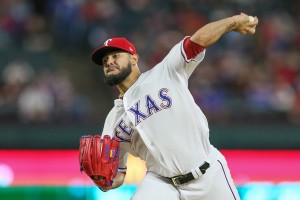It seems the Twins are optimistic of reaching terms with one or more of their young core players. According to LaVelle E. Neal III of the Star Tribune, it’s even possible that some new contracts could be wrapped up and announced “by the end of the week.”
It’s still unclear precisely which players the Twins are pursuing, and which of those are likely to put pen to paper. There is no shortage of conceivable candidates. Jose Berrios and Eddie Rosario both stand out as the most obviously appealing targets, but a variety of others could also make sense under the right circumstances.
For his part, chief baseball officer Derek Falvey acknowledged that the club has real interest in extensions this spring. As in most cases, he suggested, the team’s interest is twofold. “Having those guys under control for longer than what they presently are would be a good thing, in our minds,” said Falvey. Likewise, he added, “it’s helpful to know you are going to be able to plan out a number of years with a lot of young players.”
The first deal to hit the books will, remarkably, represent the Twins’ first post-2019 player commitment. While the organization reportedly put a few multi-year offers on the table over the winter, it has yet to spill ink on its pristine future balance sheets. That has been cause for no little consternation from some fans, as the club seems to have quite a bit of unallocated spending capacity in 2019 and beyond.
Setting aside the question whether the organization is doing enough to boost its present roster, it’ll be interesting to see how aggressive it ends up being in reaching new deals with existing players. Falvey did clearly specify a desire to expand control rights, but that’ll likely cost a pretty penny in some cases — particularly, those of Berrios and Rosario, who turned in strong 2018 seasons after reportedly rebuffing prior extension efforts from the Twins.

